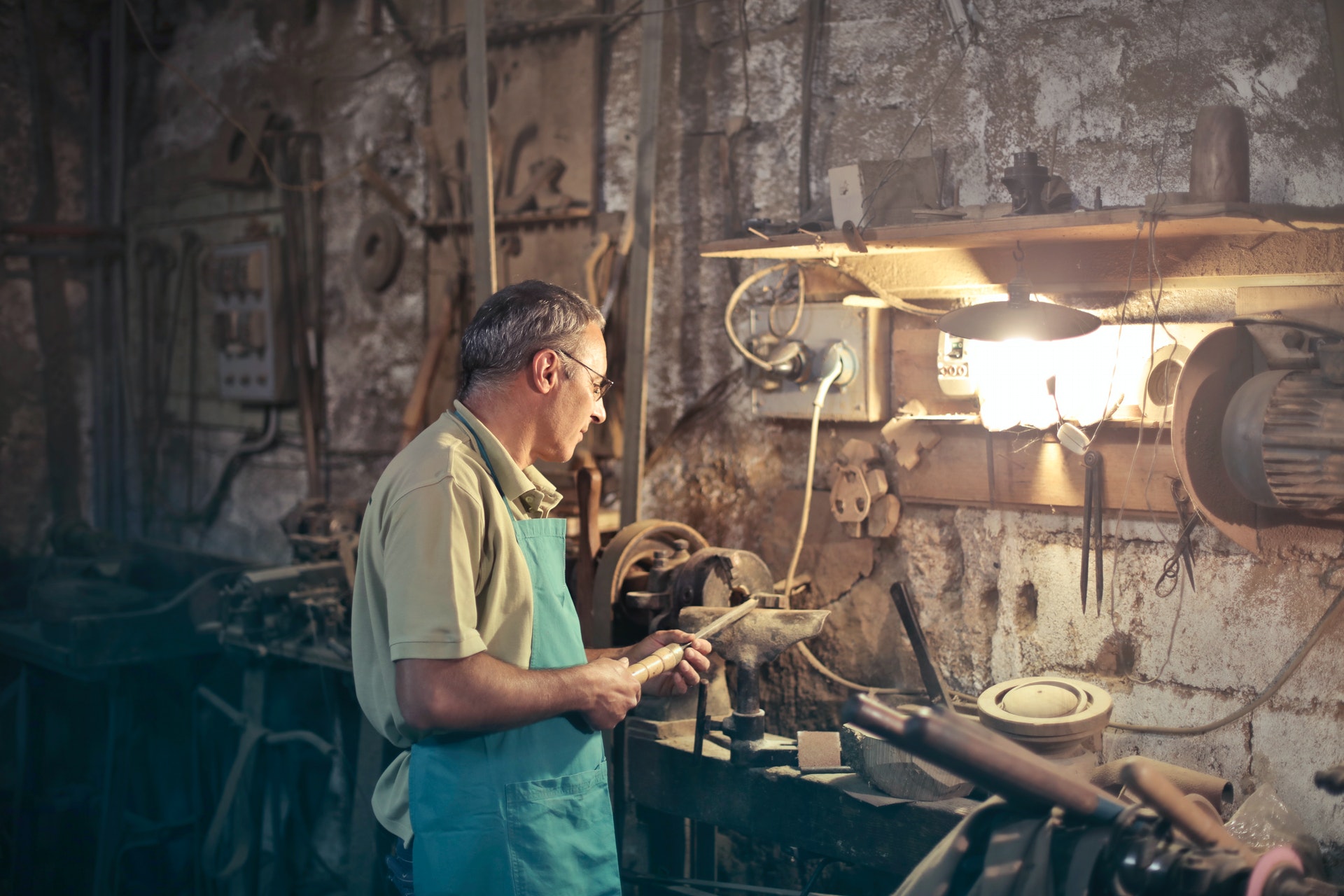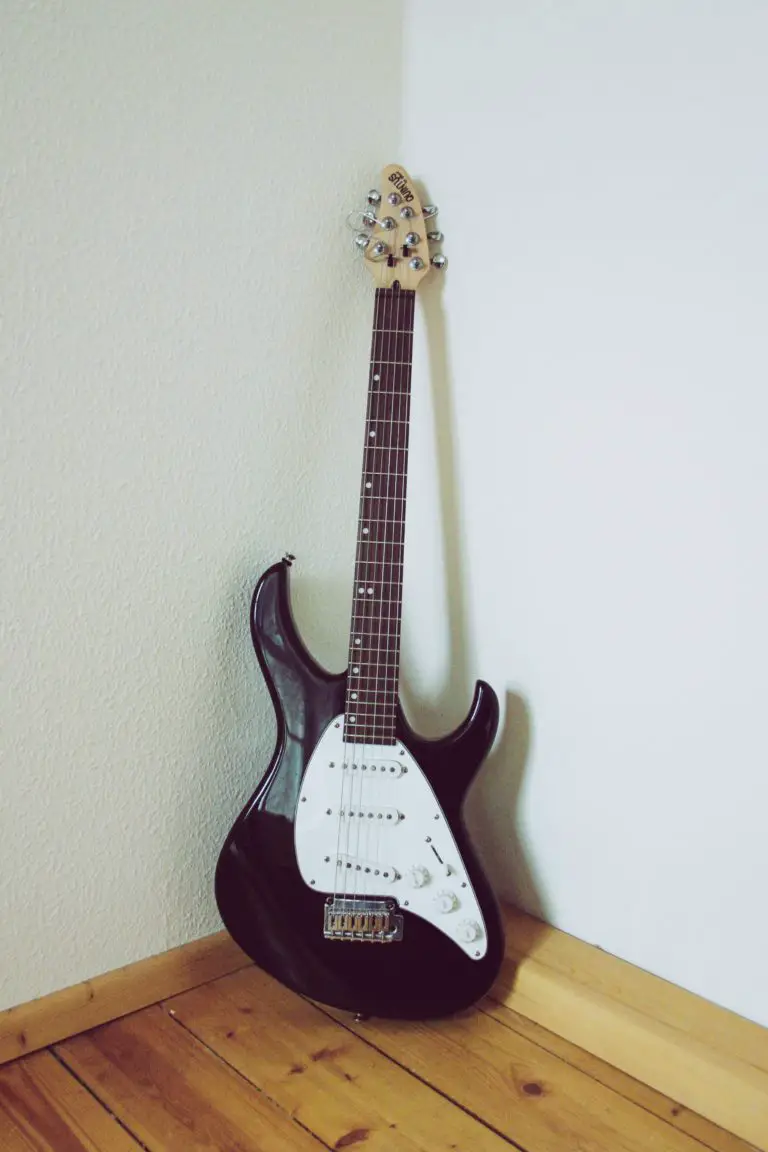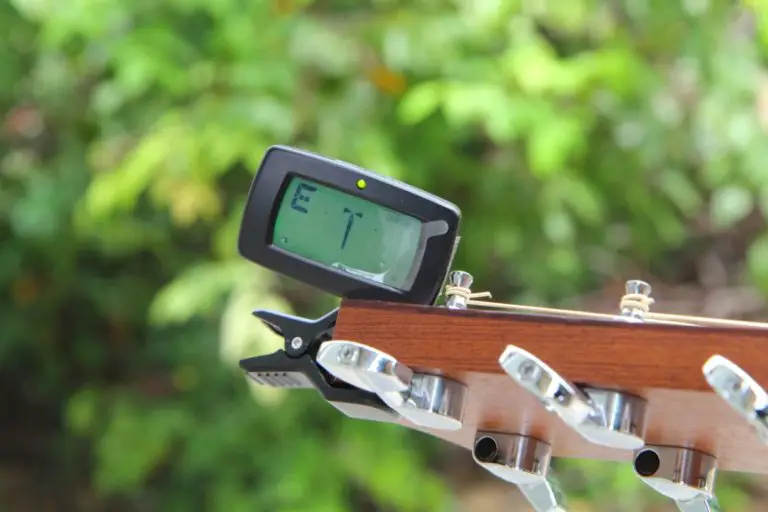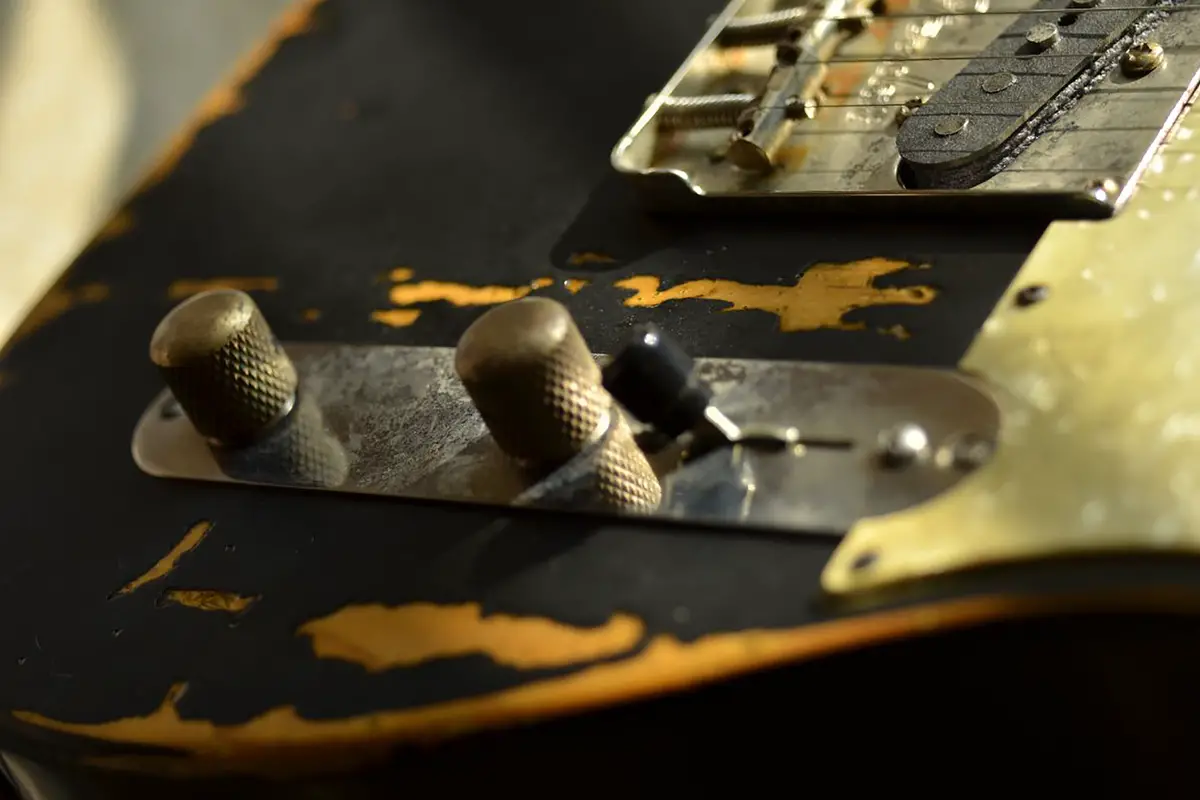Best Hurdy Gurdy for Beginners
Getting started with the hurdy gurdy is an amazing way to practice musicianship. Its unconventional nature creates a layer of shock and awe among your future audiences. But how do you select the right hurdy gurdy as a beginner?
The perfect hurdy gurdy depends on your skill level, needs, and budget. Unlike other instruments, you won’t find them mass-produced. Thus, the best hurdy gurdy for a beginner depends on the individual.
It’s not as easy as typing “hurdy gurdy” into Amazon and going with the first well-reviewed model. You’ll need to do some hunting – likely across several marketplaces. Fortunately, we’ve identified essential criteria to make your search easier, plus a few good options that’ll suit most aspiring hurdy gurdists.
What is a Hurdy Gurdy?
The hurdy gurdy is a unique and underrated instrument. In simplest terms, it resembles a cross between a violin and a bagpipe. “A small organistrum” is a slightly more elegant definition.
But the hurdy gurdy is hard to describe in terms of other instruments. It’s unique, like the guitar or the piano. However, most people are unfamiliar with the hurdy gurdy and have little idea what it looks like.
Nevertheless, the sound is iconic. A hurdy gurdy embodies the sound of the renaissance – or at least our modern understanding of it. Once you hear it, it’s not hard to fall in love with the instrument.
A hurdy gurdy consists of several strings that touch a rotating wheel. The player cranks a handle at the end of the body while pressing keys in the key box over the neck. This creates the droning melody for which the hurdy gurdy is loved.
How Much do Hurdy Gurdies Cost?
A big reason many people don’t play the hurdy gurdy is because of costs. Even a (good) used hurdy gurdy costs between $1,500 and $3,000.
Why the high price? Virtually all decent hurdy-gurdies are handmade. The wood that goes into them isn’t cheap, either.
Unfortunately, the hurdy gurdy is not the best instrument for those on a budget. Not only are upfront costs high, but maintenance requirements are also hefty. Nevertheless, it’s worth hunting for deals if you’re serious about playing this spectacular instrument.
Getting your hands on one of these instruments can be tricky. The model may not be in stock even if you find one within your budget. If not, you’ll need to wait for the luthier to order supplies, build, and ship the instrument.
You will not find a hurdy gurdy with Amazon Prime’s two-day shipping.
However, when you finally get your hands on one, you’ll realize the value of patience.
Best New Hurdy Gurdies for Beginners
We don’t recommend going with a top-of-the-line hurdy gurdy as a beginner unless you have no budget. If that’s the case, go ahead and treat yourself.
For most people, being affordable is one of the most important criteria when buying a beginner anything. But affordable doesn’t mean cheap and crappy. An enjoyable playing experience is equally important. In striking this balance, we’ve found that $1,500 to $2,000 is the sweet spot.
Based on those traits, we’ve identified a few great gurdy deals for those starting:
The ‘Merry Wood’ ($1,595)
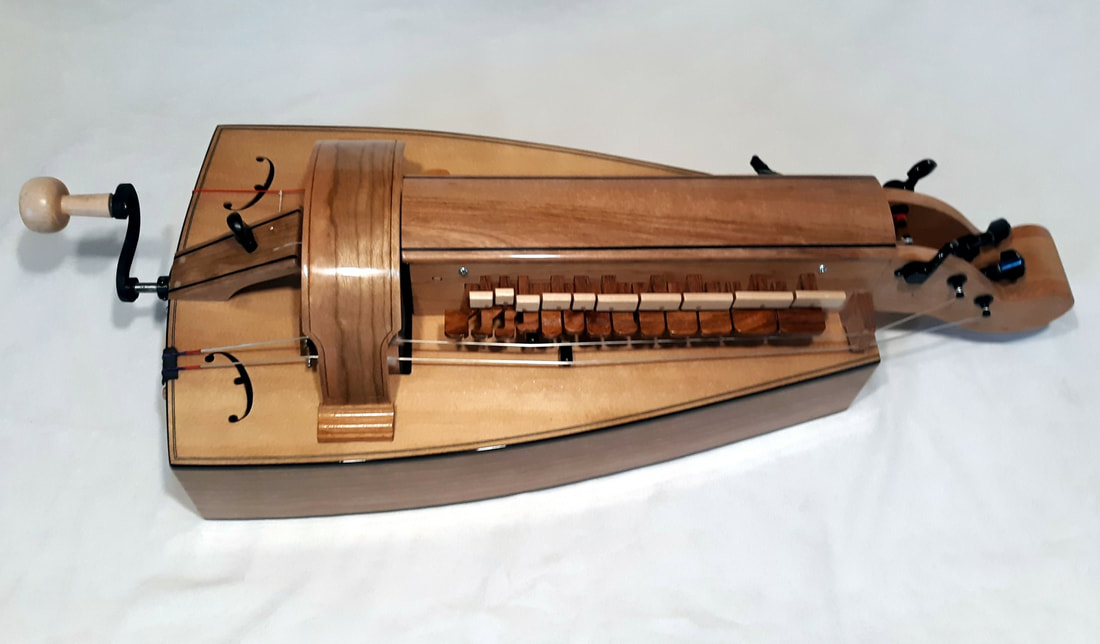
Considering this Altarwind bestseller is handcrafted to order, the price seems more reasonable.
The ‘Merry Wood’ is a modern-looking take on a classical instrument. It features a Sitka spruce soundboard with a clean finish and a deep, elegant tone. Additionally, it has five gut strings and geared tuners for an easy pre-session setup.
With a 100% hardwood build, this hurdy gurdy will last for many years when cared for properly. And based on Altarwind’s clips, its sound rivals’ models cost thousands more.
The ‘Aquitaine’ ($1,795)
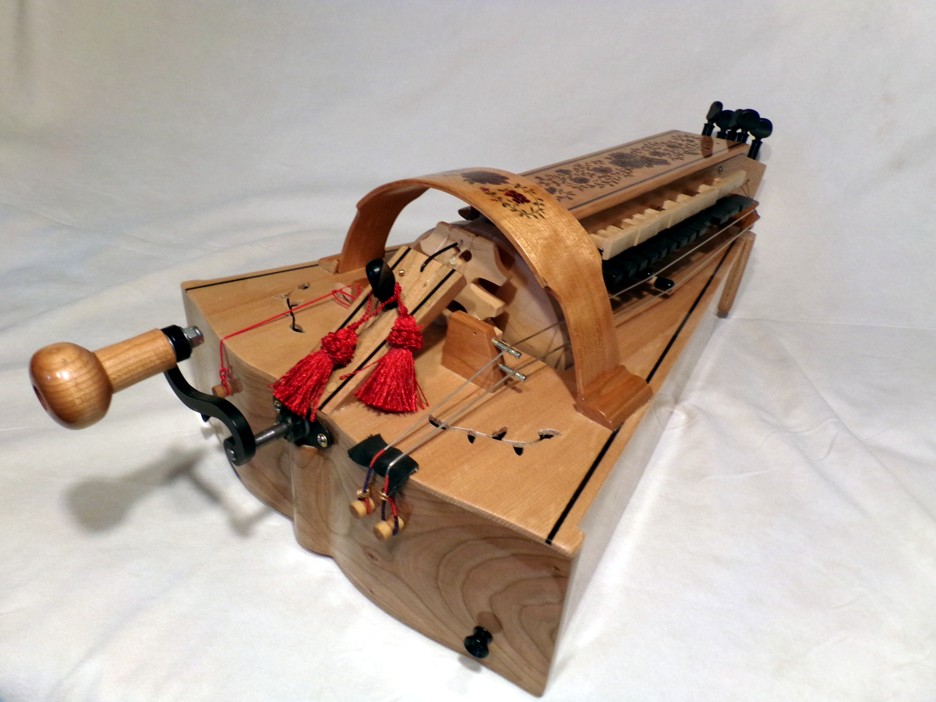
Also, from Altarwind, the ‘Aquitaine’ features a more traditional design than the ‘Merry Wood’ and costs slightly more. The extra $200 goes toward an included soft case and remote on/off switches, enabling you to activate and deactivate which strings while you play.
The hurdy gurdy also features Altarwind’s “Marshall Plate,” allowing you to adjust the pressure needed for each key. Thus, you can customize the instrument’s feel to suit you.
It’s pretty surprising that such a gorgeous, feature-packed hurdy gurdy exists for under $2,000. The Aquitaine is an excellent choice if you’re looking for an instrument that adapts to you.
Ukrainian Lira / Wooden Handmade Gurdy ($1,660)
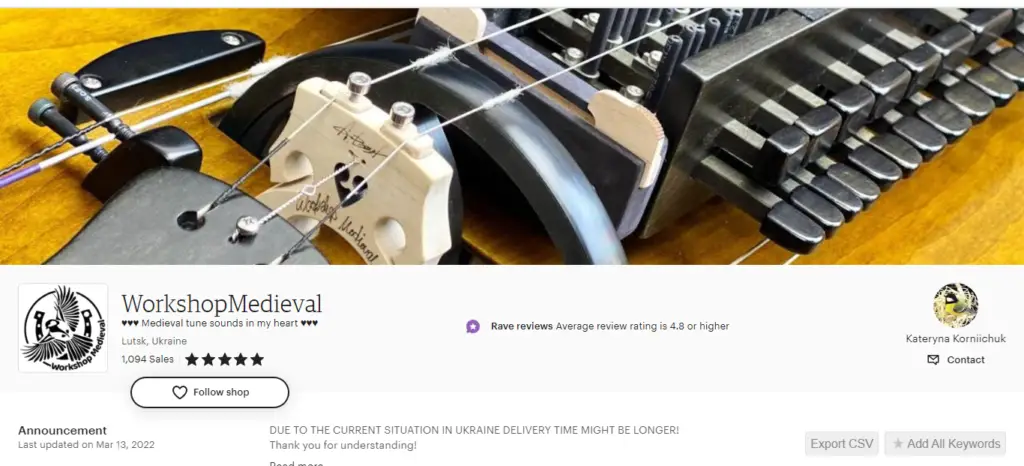
Etsy seller WorkshopMedieval presents this gorgeous music-making masterpiece. It features six strings, 24 keys, and a compact body.
Maple and linden hardwood ensures that this hurdy gurdy will withstand significant wear and tear. Also, it makes it look nice – especially when combined with a brown walnut finish.
Note: the link above directs to the seller’s page. Only one “Ukrainian Lira” instrument for sale will probably be gone between now and when this article is posted. Fortunately, a few similar options are usually ready to order anytime.
What you need to know before buying a hurdy gurdy
Where to buy a used hurdy gurdy
Buying new is costly and time-consuming. If you’re unsure of your commitment levels, buying used is a great way to save money.
This is where eBay, Facebook’s Hurdy Gurdy Marketplace, and Craigslist are beneficial. But it would be best to be vigilant, as listings may come and go quickly.
Furthermore, it would be best if you were cautious to avoid ending up with a subpar instrument. Ask to test the instrument and inspect its quality before purchase. If you know an expert, bring them with you for a detailed inspection. Purchasing a used hurdy gurdy can be pretty risky.
Remember to ask plenty of questions before spending $1,000 on a used hurdy gurdy (or anything on secondhand marketplaces, for that matter). Check seller reviews, and don’t settle for anyone with a less-than-stellar reputation.
In short, use common sense. You can expect to score a great deal on a spectacular instrument if you do. You also won’t need to wait weeks for a luthier to build it.
Where can you buy a new hurdy gurdy with good build quality?
Altarwind is one of the best places to order a hurdy gurdy with several beginner-friendly options. Despite being made of premium materials and carefully crafted by professionals, it is possible to get an instrument under $2,000.
You can also check out Olympic, another well-known luthier who has been making the instruments since 1988. Much like Altarwind, everything is custom from when you order it.
Alternatively, Etsy sellers like Workshop Medieval create quality, ready-to-ship hurdy gurdies. All of these are trusted luthiers in the space.
If you want to use a luthier not on this short list, search for their reputation on Google. Use websites like Reddit’s r/HurdyGurdy board to learn more about trustworthy resources.
New instruments below $1200 are typically a red flag when purchasing gurdies. If the maker has multiple in stock, it’s a sign that they are cheaply made and massed produced. All good hurdy gurdies are made individually.
How many strings do I need on my hurdy gurdy as a beginner?
The strings on a hurdy gurdy vary between three and six. The fewer string you have, the less complicated they are to play, making three strings the best beginner option for hurdy gurdy enthusiasts.
More strings create more options, which is ideal if you don’t want to buy a second hurdy gurdy down the road. One of the common ways a luthier cuts costs is by reducing the strings. This keeps your hurdy gurdy to the essentials, sacrificing features instead of the build quality.
Chromatic keyboards vs. diatonic keyboards – which is better for my hurdy gurdy?
Hurdy gurdy instruments rely on two types of keyboards: chromatic and diatonic. Chromatic keyboards tend to be better because they are easier to learn on.
Here’s why:
Chromatic keyboards rely on the standard chromatic scale. If you are a classically trained musician, you know this is a 12-key system used on pianos. The chromatic keyboard is more accessible because it’s more commonplace in classical music.
Diatonic keyboards rely on the diatonic scale. Because this is different than your standard chromatic scale, it creates a unique sound. There are also multiple diatonic scales to choose from, making each one unique.
Neither is inherently “better,” but diatonic keyboards are exotic, which makes them weird if you are already familiar with relying on a chromatic scale.
Why Learn Hurdy Gurdy?
Some folks may get to the part that says a “hurdy gurdy costs between $1,500 and $3,000” and decides, “Well, I guess it’s not the instrument for me.”
This is a correct decision if you cannot afford a hurdy gurdy. But if your reasoning comes from sticker shock more than anything else, hear us out.
Learning to play hurdy gurdy is a unique and fulfilling pursuit. The instrument creates a mesmerizing sound unlike no other that is sure to impress and entertain your friends, family, and yourself. Plus, it’s not that hard to learn.
Unlike playing the violin, there is no unique technique to make sound come out of a hurdy gurdy. Yes, there is a wheel that you must turn. However, this is not too hard to do if you’ve ever used a pencil sharpener like this. Then, you press the keys, and the hurdy gurdy will produce clear notes.
Additionally, most hurdy gurdy music is slow. The instrument shines through producing deep, resonant droning. Playing slowly suits the hurdy gurdy best.
Caring for Your Hurdy Gurdy
You must remember to apply rosin and replace the cotton to keep your instrument sounding its best. Violin players know about rosin, the wax that goes on the bow. A hurdy gurdy requires the same thing.
The difference is that a hurdy gurdy has no bow. Instead, the spinning wheel serves an equivalent role. It’s best to apply rosin to the strings and use the crank to distribute it evenly over the wheel.
Finally, replacing the cotton reduces the frequency you’ll need to replace the strings. Doing so reduces friction and improves tonal quality.
Is the hurdy gurdy hard to play?
Despite its unconventionality, the hurdy gurdy is an easy instrument to learn. There are no physical adaptions you need to make to play it, such as growing callouses. You also do not need to train your breath or stretch your fingers across large distances to play chords.
The hurdy is a pleasant instrument for those who’d like to play music on day one. However, there are plenty of advanced techniques to keep things fresh for years.
Ultimately, the most challenging part of hurdy gurdy ownership is maintenance.
Can I build my own hurdy gurdy?
Some companies offer “hurdy gurdy kits” that help you build a unique hurdy gurdy. So yes, you can build your own hurdy gurdy if you want.
One of the more well-known sites for building hurdy gurdies is the Renaissance Workshop Company. They sell kits and offer one year of helpline to support you with direct guidance on building your gurdy.
Alternatively, you can purchase a Hurdy Gurdy Kit from MusicMakers. Using these kits can help you get started with a new skill, but they aren’t likely to be as high quality as purchasing directly from professional sources like Alterwind or Olympic.
Conclusion
It’s easy to fall in love with the hurdy gurdy at first sight. They are impeccable instruments that maintain a classical renaissance charm. Even today, almost all of them are handmade. Thus, getting your hands on one as a beginner can be tricky.
Ultimately, the best hurdy gurdy for a beginner depends on what’s currently available. New hurdy gurdies are made to order and come and go quickly. You must keep your eyes open.
Finally, eBay and the Hurdy Gurdy Marketplace on Facebook have impressive used options if you know how to look.
Perhaps the elusiveness of the hurdy gurdy is just one of its many charms.

